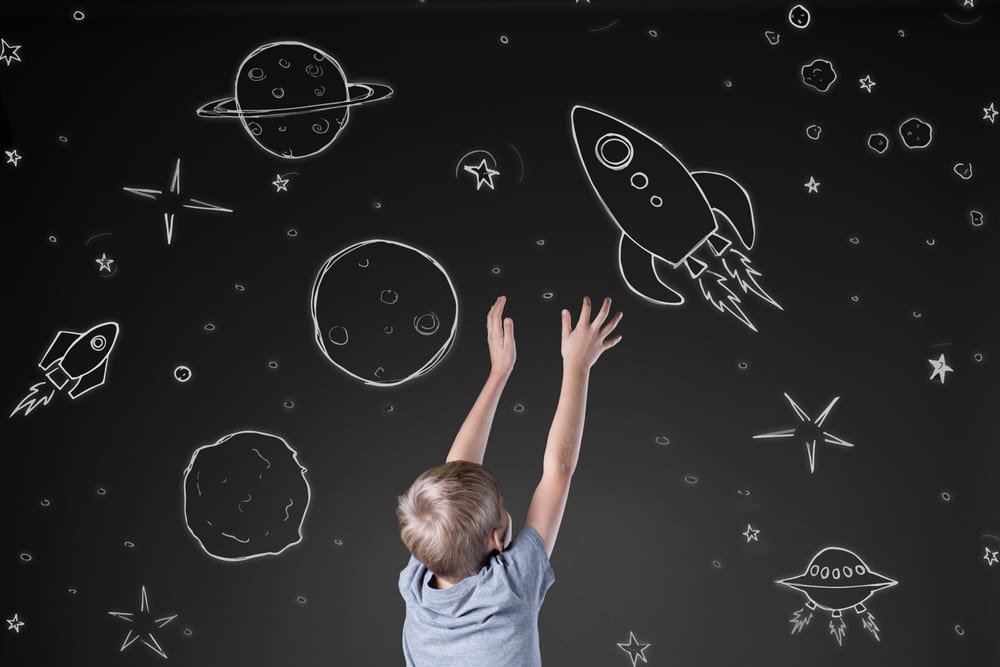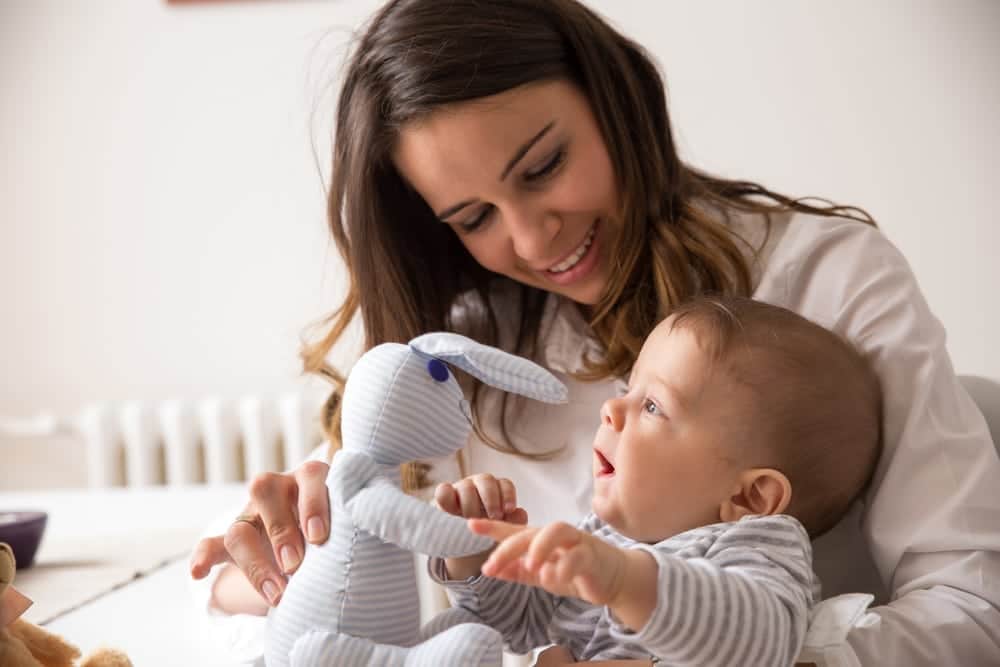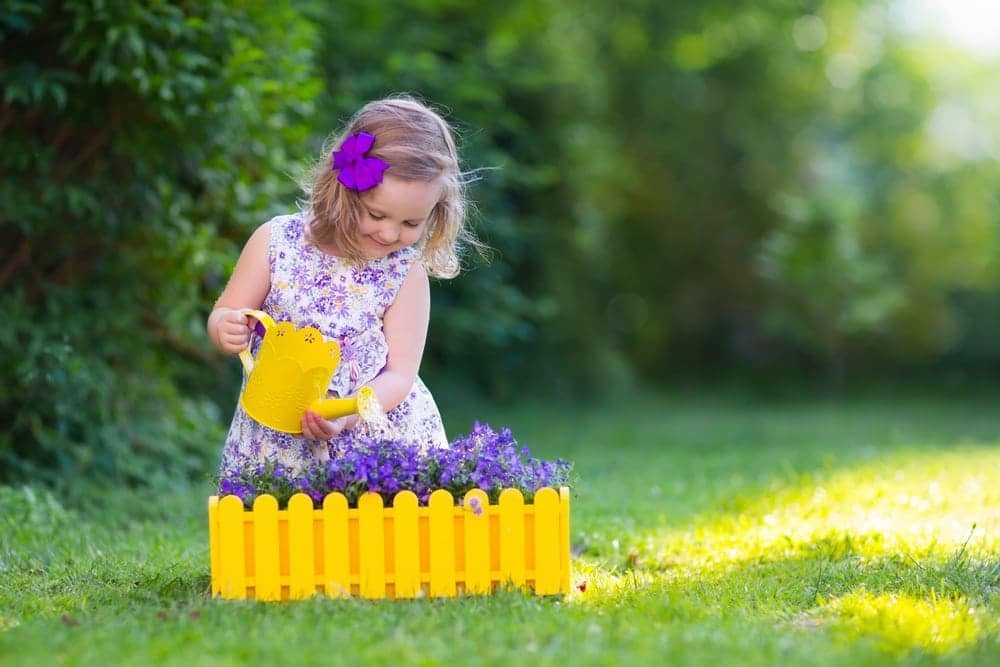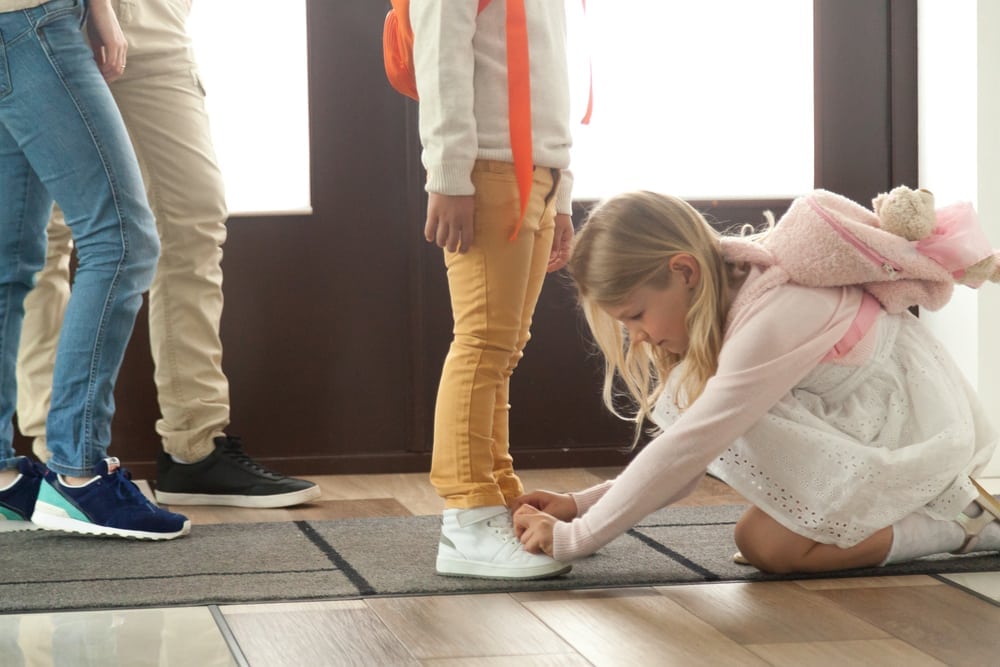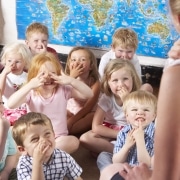by Andrea Beier
There is no doubt that almost everyone has heard of the term “mindfulness” in the last few years. It seems there has been quite an explosion of interest in the concept; complete with varying definitions of what mindfulness even is.
I became interested in the term as a friend of mine was training to become a yoga instructor. After many informal conversations about breathing and the importance of it, I wanted to try out some breathing techniques in our Montessori environment, with the students. We had great success in introducing very simple breathing exercises; which we would practice daily. We would informally discuss how to be “mindful” of our breathing and how it would help us become relaxed and calm. Soon we were able to refer back to the importance of breathing with a child who was struggling with various emotions. We would gently remind the child to remember to breathe first; and then we would address the source of his/her anxiety, sadness, or fear, once the child had grown calmer.
The results were stunning! Children, who moments earlier had been in some sort of emotional distress, would start focusing on breathing and their distress seemed to melt away within a few minutes. The breathing exercises in class continued on as I became intrigued by the concept of mindfulness and how our students could benefit from it.
What is mindfulness?
According to Jon Kabat-Zinn, founder of the Mindfulness-Based Stress Reduction program at the University of Massachusetts Medical Center, it means “paying attention in a particular way; on purpose, in the present moment and nonjudgmentally”. In her book, I AM PEACE, Susan Verde describes mindfulness as “being fully engaged…paying careful attention to our experience (our feelings, sensations in the body, emotions, surroundings) …with kindness and curiosity”. Additionally, Susan Mayclin Stephenson, author of Montessori and Mindfulness, states “mindfulness definitions include being involved with, or concentrating on… without being distracted by what is going on around us”. It is this last definition that reflects the deep correlation between Montessori and mindfulness.
Montessori environment/mindful education:
Even though Dr. Montessori did not use the term “mindfulness” she acknowledged a deep connection between the mind and body, “The essential thing is to arouse such an interest that it engages the child’s whole personality”. (The Absorbent Mind). Within a Montessori environment, there exist a myriad of opportunities that promote and reflect mindful experiences.
The long, uninterrupted Montessori work time is perhaps the most important. It is within this timeframe that the mindful, deep concentration can occur. During the work time, the child is able to experience many freedoms, such as freedom of movement and freedom of choice, which help foster confidence and happiness. Renowned Hungarian psychologist Mihaly Csikszentmihalyi studies what brings people happiness and the study of “flow” as a form of mindfulness. He has concluded, “Montessori schools are ahead in the area of figuring out what makes life meaningful, in creating the conditions for ‘flow’, because children can choose their own work, can concentrate without being interrupted, and they can work on their own at their own speed, and thus progress naturally improving their skills”.
The carefully prepared Montessori environment itself is designed to foster calm and concentration. The environment is simple, beautiful, orderly, attractive and inviting. The sensorial materials are designed to enhance a child’s deep awareness of her senses. The lessons of “Grace and Courtesy” inherently promote the importance of mindful awareness between the child and others by using soft voices, treating others and the environment with care and respect, walking around mats, and placing materials with great care and order. “Walking on the Line” could be viewed as an example of “walking meditation” as great thought is put into each step, as the child walks in a carefully, concentrated manner. Ultimately, “The Silence Game” provides children with an opportunity to “listen to the quiet,” to breathe, self-reflect, self-regulate, be aware of his surroundings and senses – to be mindful.
Benefits of mindfulness:
The list of reasons why mindfulness is beneficial to children (and adults alike) is long with benefits ranging from physical, emotional, psychological and relational. Some of the benefits including the following:
-reduced stress and anxiety
-better sleep
-relief in muscle tension
-feelings of peace, calm, and harmony
-increased concentration, focus, attention, and self-control
-increased patience, empathy, kindness, and compassion
-greater self-esteem, confidence, and motivation
-lower blood pressure and heart rate
-less irritation and agitation
Sources: (Multiple)
Throughout the process of learning about mindfulness and how our students could benefit from it; I had a bit of an epiphany. I had been searching for what more I could do to provide mindful experiences for them and was gently reminded that day in and day out, we were already practicing it. It was jarring to see the similarities between Montessori education and mindfulness; this being yet another example of Dr. Montessori’s innovative forward-thinking, over a century ago, still benefiting today’s children and generations to come. New theories, opinions, and catchy buzzwords will surely continue to pop up (and possibly subsequently fade away) as time goes on; while the Montessori method, philosophy, and commitment to the mind/body connection are proving to be quite timeless.


